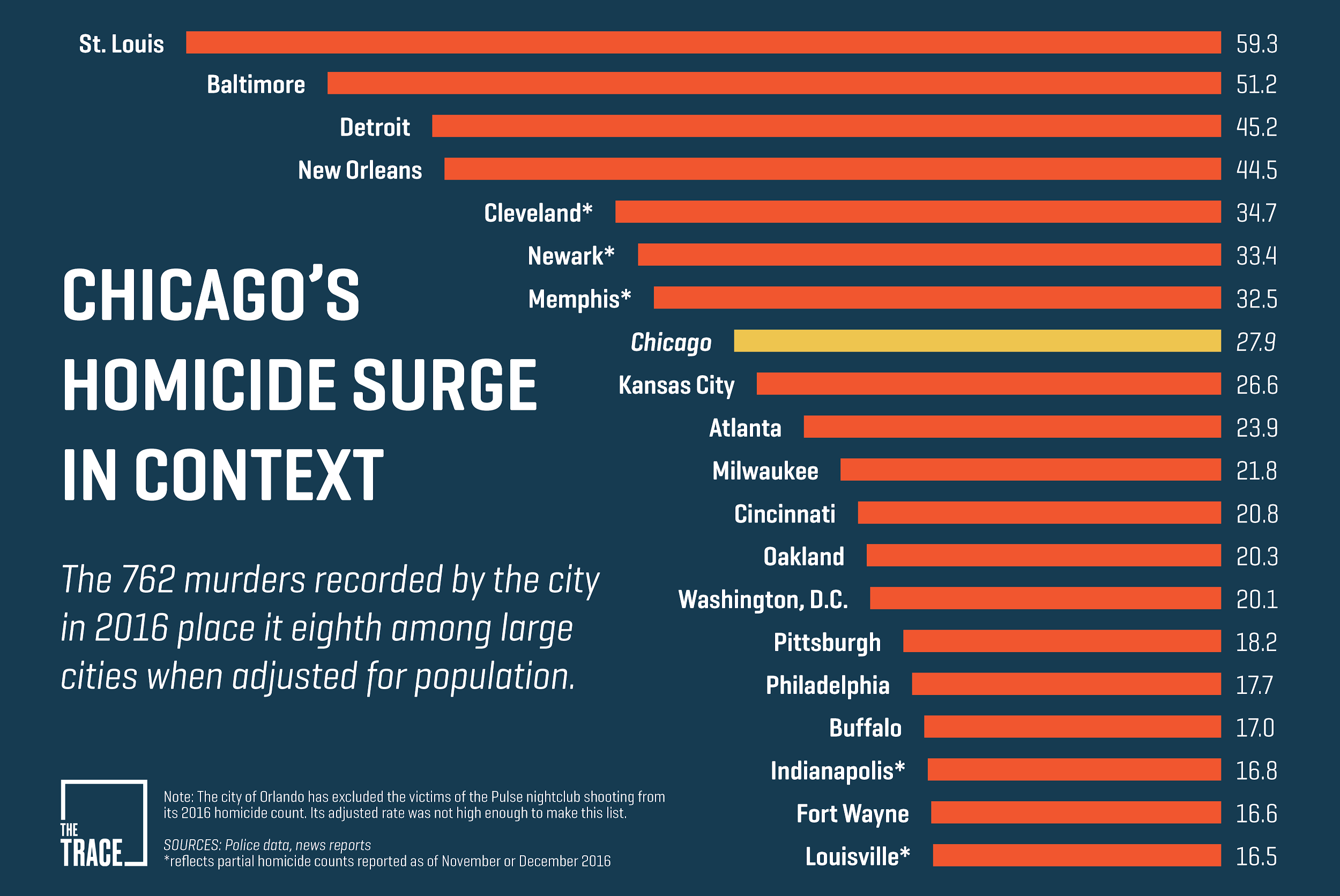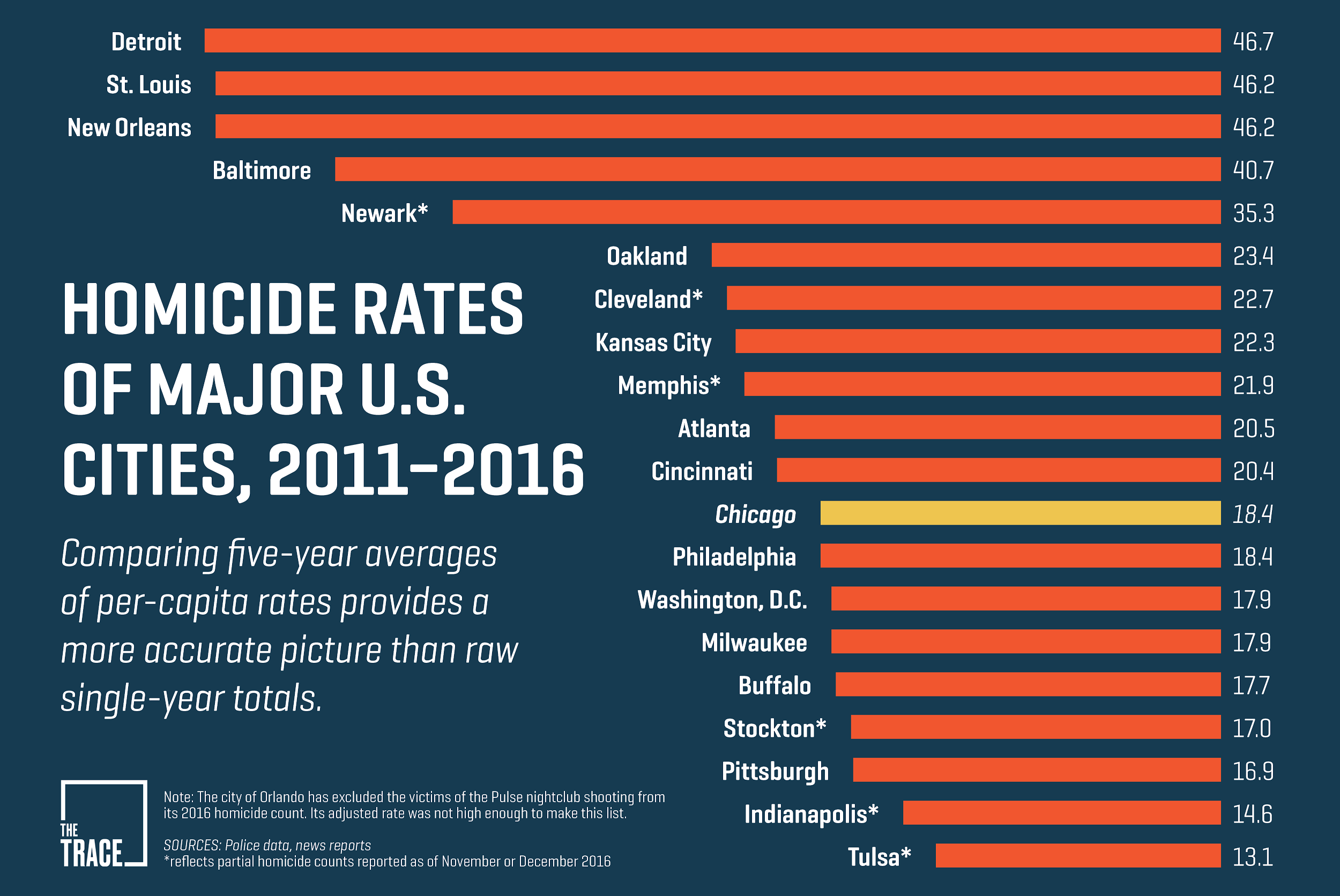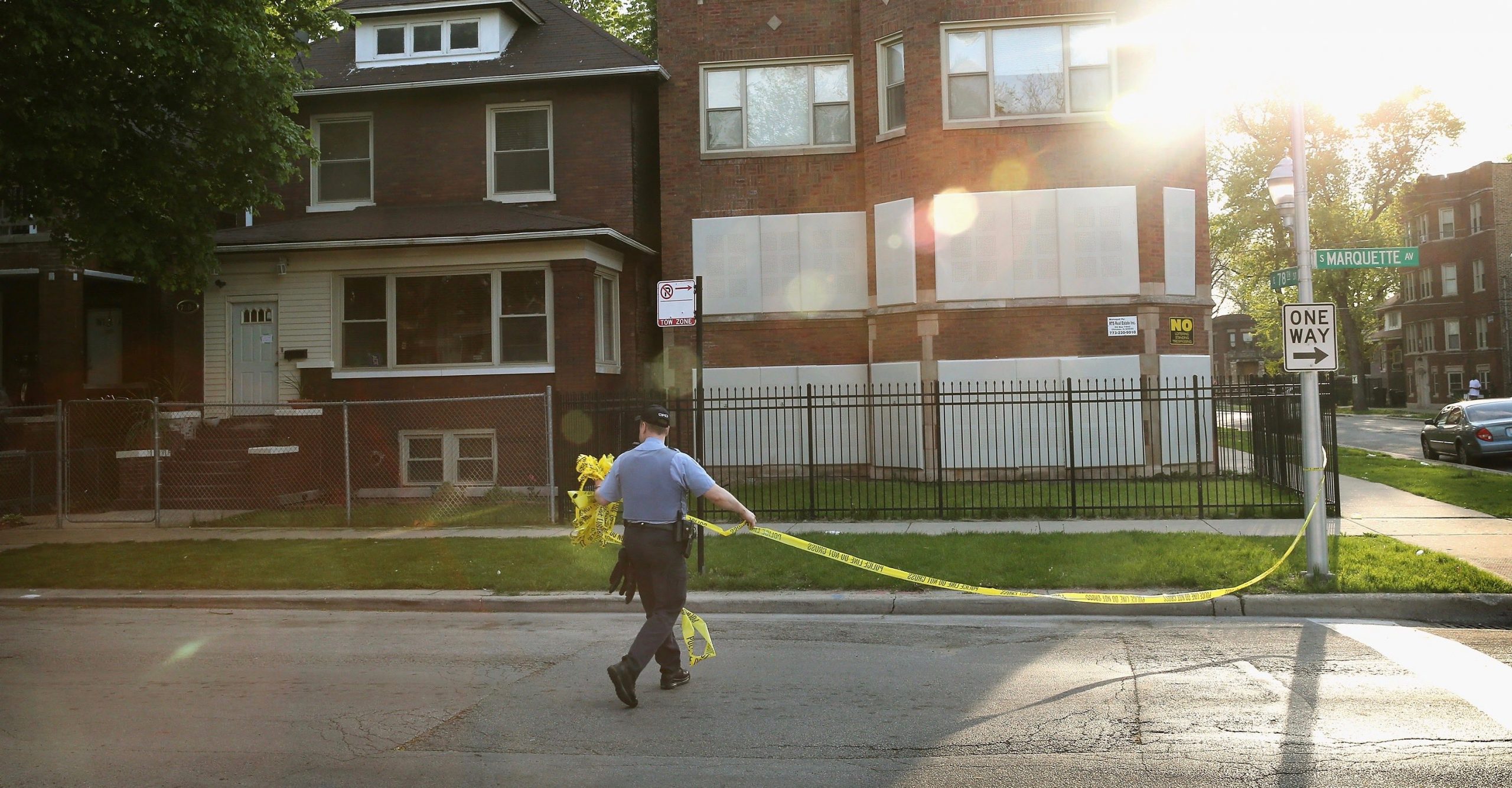Murders increased significantly last year in the majority of American cities with a population over 250,000, according to preliminary data from police departments and news reports. The bump comes one year after killings rose across the country at their fastest pace in 25 years, and is likely large enough again to drive up the national homicide rate when final tallies are released by the Federal Bureau of Investigation.
In no place did the uptick feel more dramatic than in Chicago. The city recorded 762 murders last year — a 59.4 percent increase over 2015, and its highest tally since the mid-1990s. A December report by the Brennan Center for Justice, a left-leaning think tank, found that Chicago single-handedly accounted for nearly half of the 14 percent increase in homicides observed in the nation’s 30 largest cities. Ninety-one percent of the city’s killings were committed with a firearm.
Chicago has become synonymous with gun violence, attracting attention from the press, politicians, and advocates on both sides of the firearms debate. In one of the final installments of a New York Times series on shootings in the city, Reverend Michael Pfleger, a prominent anti-violence activist and pastor on the city’s South Side, described Chicago as “the poster boy of violence in America.” President-Elect Donald Trump has used Chicago as an argument against tighter gun laws, taking to Twitter to vow federal action if local leaders can’t stanch the tide, a talking point echoed by the National Rifle Association’s top lobbyist.
But despite the soundbites, Chicago remains in the middle of the pack when homicide is measured on a per capita basis. In 2016, the city had a rate of 27.9 killings per 100,000 residents — half that of St. Louis, whose 188 murders amounted to 59.3 homicides per 100,000 people and preserved that city’s status as America’s murder capital. Baltimore placed second, with a homicide rate of 51.2, followed by Detroit, New Orleans, and Cleveland. “Because Chicago has so many people, it can get a murder every day, and that gets people’s attention,” John Pfaff, a professor of law at Fordham Law School, told The Trace recently. “When you focus on numbers, not rates, Chicago ends up looking worse because you forget just how big a city it is.”

Nor was Chicago unique in notching a steep year-over-year increase in its murder rate in 2016. Louisville tallied 112 homicides by the end of November, for a 40 percent increase in its murder rate over last year. Memphis matched Chicago with a 59 percent rise in its homicide rate as it totaled 214 killings by mid-December. Killings in San Antonio spiked to a 20-year per capita high, reaching a total of 10.3 per 100,00 residents — a 61 percent increase over last year.

Just as criminologists warn against focusing on raw homicide totals, they also caution against fixating on a single year’s statistics. “You can’t look at one moment in time,” Jaclyn Schildkraut, professor in the public justice department at the State University of New York told the Christian Science Monitor. “Being able to look at [crime] over time is very important because it’ll give you a picture of what’s going on in a community.” When The Trace crunched Chicago’s five year average last October, covering the years 2010 to 2015, the city came in eighteenth among the 82 American cities with populations greater than 250,000. Updating the same calculations to cover homicide rates for the years 2011 to 2016, Chicago’s falls to twelfth.

If some scholars of crime had their way, discussions of homicide rates would focus not on cities, but on the few urban neighborhoods where the phenomenon of murder inequality is especially stark. In St. Louis, which has had the country’s highest homicide rate since 2014, violence is concentrated within neighborhoods like the Greater Ville, where the homicide rate per capita is close to 300. According to police data, almost half of the city’s killings occur in only eight of its 79 neighborhoods. The unequal distribution of violence applies to Chicago, too. Five police districts, which contain only 8 percent of city’s population, recorded an estimated 32 percent of its murders in 2016.
As in part years, a disproportionate share of Chicago’s homicide victims were young African-American men, killed in alleys and on street corners when an altercation was made deadly by the use of a firearm. A report released this week by the University of Chicago Crime Lab sought to identify what’s driving the spike in violence. It found that conditions commonly believed to influence gun crime — unemployment and poverty rates, availability of social services, mistrust in institutions, and public policy — did not change abruptly from 2015 to last year, and cannot directly explain the increase in murders. “One key implication of these data is the importance of a policy response that is focused on the core problem,” the report reads. “Violence concentrated largely in a moderate number of our most disadvantaged neighborhoods, carried out by teens and young adults in public places with illegally owned, and perhaps increasingly lethal, firearms.”
*The city of Orlando has excluded the victims of the Pulse nightclub shooting from its 2016 homicide count. Its adjusted rate was not high enough to place the city among the 20 with the highest murder rates for last year.
Correction: An earlier version of this article incorrectly identified the San Antonio homicide rate in 2016 as 151 per 100,000 residents. It was in fact 10.3 per 100,000 residents, and the total number of homicides that year was 151.
*
For the most up-to-date statistics on murder rates in American cities, see our updated post.


